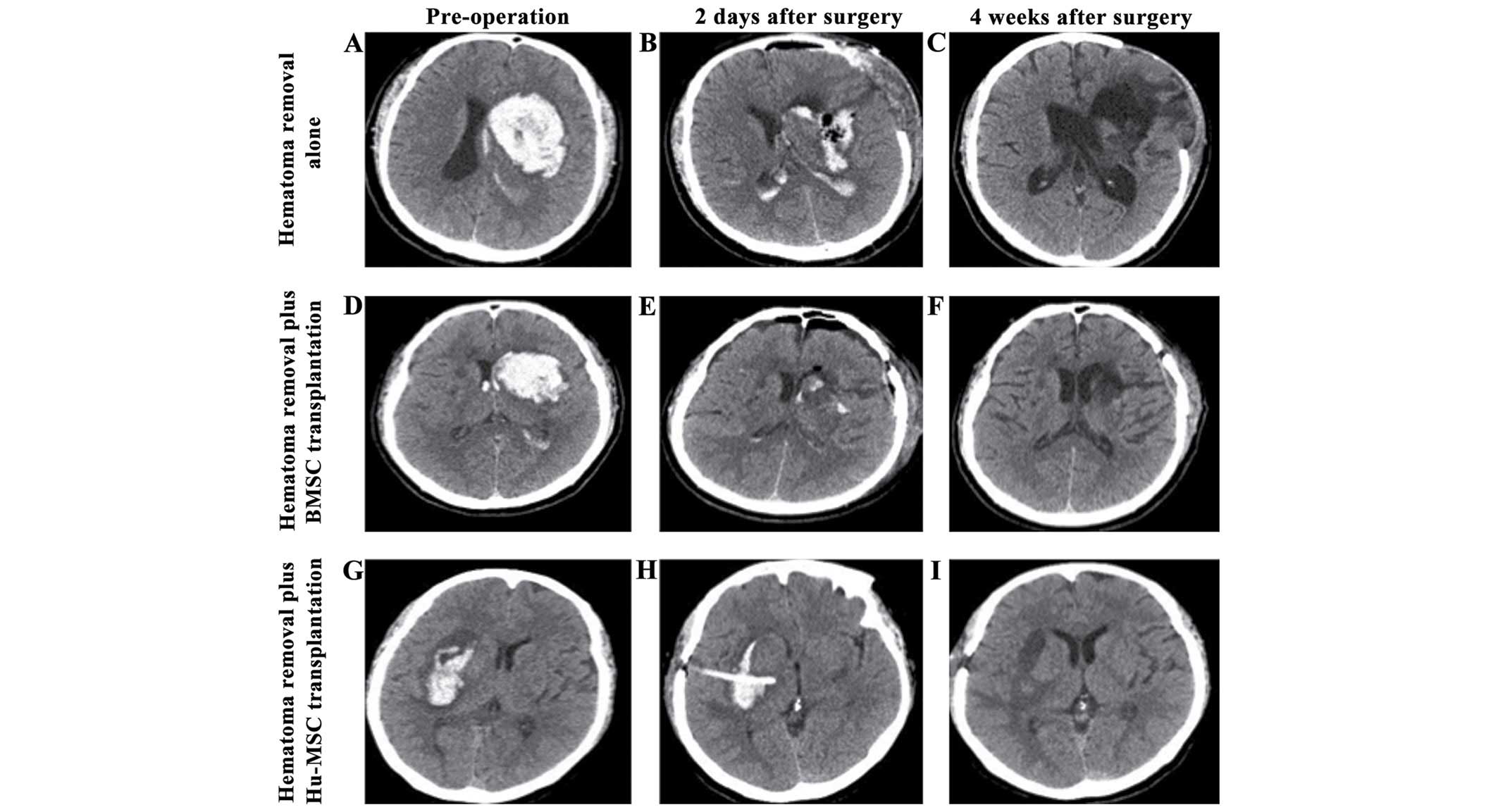Cell therapy for cerebral hemorrhage: Five year follow-up report
- Authors:
- Published online on: October 18, 2016 https://doi.org/10.3892/etm.2016.3811
- Pages: 3535-3540
-
Copyright: © Chang et al. This is an open access article distributed under the terms of Creative Commons Attribution License.
Metrics: Total
Views: 0 (Spandidos Publications: | PMC Statistics: )
Total PDF Downloads: 0 (Spandidos Publications: | PMC Statistics: )
Abstract
The aim of the study was to examine treatment of cerebral hemorrhages with bone‑marrow or human umbilical cord-derived mesenchymal stem cells (BMSCs or Hu‑MSCs) and conventional surgical approaches, and determine and compare the effectiveness, feasibility, safety and reproducibility of each method. A retrospective analysis was performed on a cohort of cell‑treated cerebral hemorrhage patients from October 1, 2007 to October 1, 2009. A total of 24 patients, all of whom received conventional surgical treatment, were classified as follows: i) The control group consisted of 8 patients who received only hematoma removal surgery, ii) the autologous group consisted of 7 patients who received additional autologous bone marrow mononuclear cell transplantation, and iii) the allograft group consisted of 9 patients who received additional umbilical cord mononuclear cell transplantation. After conventional hematoma removal surgery and X‑ray supervision within 24 h and at 7 days, neurological disability and function tests were completed 3, 6, 12, 36 and 60 months later. The T‑cell marker plasma levels were analyzed after 60 months. The results showed that, at approximately 3.5 months after graft the hematomas in all the groups were completely reabsorbed as observed on computed tomography scans. However, the functional outcomes in the cell‑transplanted groups were better than in the control group after 5 years. While the National Institutes of Health Stroke Scale, modified Rankin score and modified Barthel index scores were simliar in the cell‑transplanted groups, patients in the allograft group had better outcomes than those in the autologous graft group starting at 3 months and until the end of the follow‑up period. The serum levels of T‑cell markers CD4, CD56 and human leukocyte antigen‑DR in the allograft group showed no signs of immunogenic graft complications and there were no significant differences in T‑cell subtypes among the patient groups. The results of the present study suggest that, treatment of cerebral hemorrhage patients can be safely and effectively accomplished using Hu‑MSC grafting and larger clinical trials should be considered in the future.










